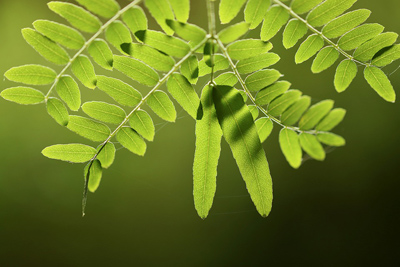
What Kills Locust Trees? Diseases And Insects Explained
Locust Trees are popular additions to the gardens of Michigan, offering shade and a beautiful aesthetic for those looking for something a little different in their yard.
But like many of the more unique types of trees in North America, they come with a laundry list of maintenance items to ensure they stay healthy and look their best. At the top of the list are the numerous insects and diseases that can overpower foliage and run rampant if not treated carefully with the right regimen.
Here are some of the most important pests you should watch out for, including one that only just arrived in the region.
Locust Tree Pests & The Insects To Watch Out For
First appearing in the Michigan area in 2021, Lantern Flies are a new hazard for many trees and have become the latest invasive species to deal with.
For those who have yet to run into them, the spotted lanternfly was first found in the United States in 2014. This planthopper hails from China and feeds on several tree types, including fruit-bearing and woody variants. The problem has already been flagged at a Federal level, with warnings in place for the country’s grape, orchard, and logging industries.
Issues the Lanternfly brings include sucking sap and secreting a sugar-rich, sticky liquid called honeydew. This causes dramatic health issues for trees, including the growth of mold. Honeydew is also known for attracting other pests and can be a force multiplier when dealing with nuisance pests in your backyard.
The sticky liquid can also cause an increase in the appearance of yellow jackets, flies, and ants in your garden, which is not something anyone wants to face with warm weather approaching. The good news is that Lanternfly eggs can be spotted on the bark of trees, and insecticidal soap can be sprayed directly on adults and nymphs to help lower the population.
Other bugs to watch out for include Honeylocust plant bugs, which tend to infest trees in late spring. Brown or yellow spotting on the leaves can be an early warning sign of an infestation, and you may also notice injured foliage. Chemical controls can help alleviate this issue, but there are also honeylocust borers to plan for.
Borers are another insect that could affect the health of your Locust Trees. They have earned their name well, as they like to tunnel into the bark of trees during their larval stages, laying eggs in June. Supplemental insecticidal can also be used to control their rapidly growing population.
Many of the different types of pests that will attack your Locust Tree can be controlled with the right treatment. Here are some of the others to look out for:
- Blister Beetles
- Cottony Maple Scales
- Eriophyid Mites
- Honeylocust Spider Mites
- Honeylocust Pod Gall Midges
Locust Tree Diseases & Molds
Having dealt with the invasive species that can wreak havoc, you should also be ready to deal with different kinds of fungus. Locust Trees are susceptible to different diseases, with Verticillium Wilt proving one of the deadliest. Entering the tree through the roots, the main issue with this disease is that it remains hard to detect. That is, until you notice leaf curling, yellow or red leaf coloring, and wilting branches. Wilting generally occurs on only one side of the tree.
In the worst cases, a Locust Tree may even die suddenly, leaving you with very few options for salvaging the situation. Luckily, other nasty diseases can be spotted much quicker, including cankers. These present themselves through dead spots appearing on the bark of the trunk and branches.
Cankers decay wood, leaving your tree vulnerable to ice, heavy snow, and extreme winds. The good news is that preventative measures can be used, such as annual fertilization, maintaining suitable soil moisture, and proper watering.
Wet wood is another nasty customer that can make a Locust Tree ooze slime and turn the wood into a yellow-brown color. Left unchecked, the wood will crack during the winter, and the tree’s interior will sustain damage, resulting in splitting and warping.
Let Safari Tree Help Protect Your Garden
We can help with your most important yard maintenance decisions, including providing preventive measures to avoid some of the worst pests listed above. To get a free estimate for your yard, contact Safari Tree today.





